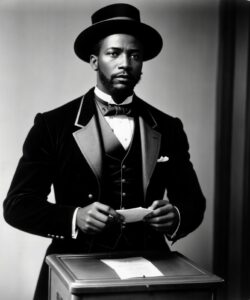On February 3, 1870, the United States ratified the 15th Amendment, a landmark achievement in the struggle for civil rights. This amendment declared that the right to vote could not be denied based on “race, color, or previous condition of servitude,” effectively granting African American men the legal right to cast their ballots. Coming in the wake of the Civil War and the abolition of slavery, it was a bold step toward fulfilling the promise of democracy for all. However, while the amendment was a victory on paper, the reality of voting rights for Black Americans remained an uphill battle.
For newly freed men, the ability to vote symbolized more than just participation in elections—it represented dignity, citizenship, and a voice in shaping their own futures. During the Reconstruction era, African American voters helped elect Black politicians to local, state, and even national offices. This period saw remarkable progress, with leaders like Hiram Revels and Blanche K. Bruce becoming the first Black U.S. Senators. But as quickly as these gains were made, fierce opposition arose. Southern states, resistant to racial equality, devised ways to suppress Black voters through poll taxes, literacy tests, and outright violence, leading to the disenfranchisement of many African Americans for nearly a century.
It wasn’t until the Civil Rights Movement of the 20th century that the full promise of the 15th Amendment was realized. The Voting Rights Act of 1965, signed by President Lyndon B. Johnson, finally dismantled many of the barriers that had kept Black Americans from voting. Yet, even today, discussions around voter suppression and access to the ballot box show that the fight for true electoral equality is ongoing.
The 15th Amendment stands as both a milestone and a reminder of the continuous struggle for justice. It was a testament to the resilience of those who fought for their rights, and it remains a symbol of the ever-evolving journey toward a more inclusive democracy.

